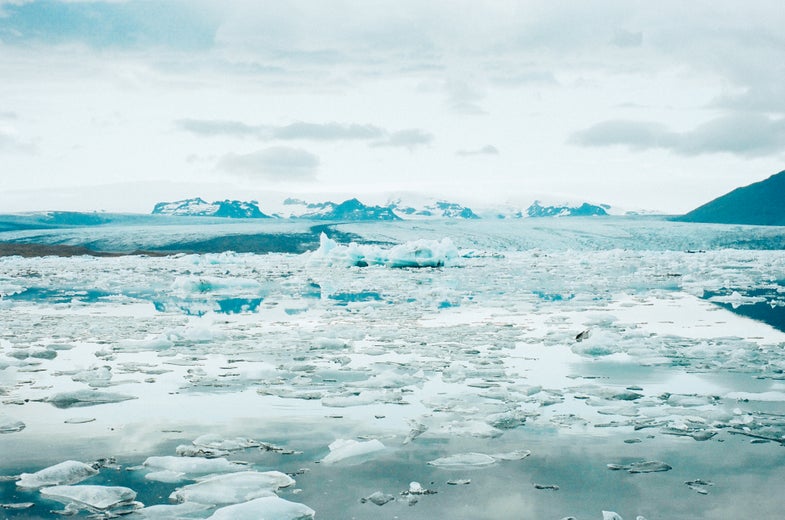Time-lapse photos show just how quickly the world’s glaciers are disappearing
An elegy for ice


The rapid melting of Iceland’s Sólheimajökull glacier is tangible. When I visited in 2013, our guide punctuated every few steps by saying, “Ten years ago the glacier would have started here …. five years ago the glacier would have started here.” Each step in which our feet were greeted by dusty gravel instead of the crunch of glacial ice gained a funereal air. He wasn’t trying to bring us down, he just couldn’t help but remark on the beauty that stood before us, the beauty we are losing.
Most of us will never see glacial ice, and maybe that’s why it’s so easy to accept their loss as a part of the cost of humans doing business. When we think of the world’s glaciers, if at all, it’s the impact their loss will have on global drinking water supplies (catastrophic), or on rising seas (equally abhorrent).
For those of us who have experienced glacial ice, the loss represents more. Ice is its own ecosystem, distinct and arguably as important as any other habitat. There’s a smell to glaciers, like snow but somehow cleaner and sweeter. There’s a sound to glaciers too—crunches of feet on ice, and pops, and moving water—all of it as unique and distinct as any forest.
That’s what a new report from the Geological Society of America is trying to convey. In an article titled Savor the Cryosphere, researchers from the University of Pennsylvania, Ohio State University, Kansas State University and the nonprofit organization the Extreme Ice Survey have attempted to document and convey, through stunning time-lapse photography, videos, and multimedia, the scale of glacial demise and the gravity of what we’re losing. In other words, maybe pictures can express so far what satellite images and core samples have not, so that future generations of humans will also have the opportunity to cherish the cryosphere.
We’ve included some of their incredible time-lapse photography below.
Qori Kalis Glacier, an outlet of the Quelccaya Ice Cap in Peru, has retreated roughly three-quarters of a mile between 1978 to 2016.
Alaska’s Columbia Glacier, on the state’s south coast, has retreated more than four miles between 2009 and 2016.
Alaska’s Mendenhall Glacier sits roughly 12 miles away from the state’s capital, Juneau. The glacier has retreated 1800 feet, or a third of a mile in eight short years.
Switzerland’s Stein Glacier, like Alaska’s Mendenhall Glacier, has retreated almost a third of a mile in 9 years.
The Trift Glacier in the famed Swiss Alps has retreated just under three-quarters of a mile in 9 years.
Iceland’s Solheimajokull glacier retreated 2,000 feet in eight years.